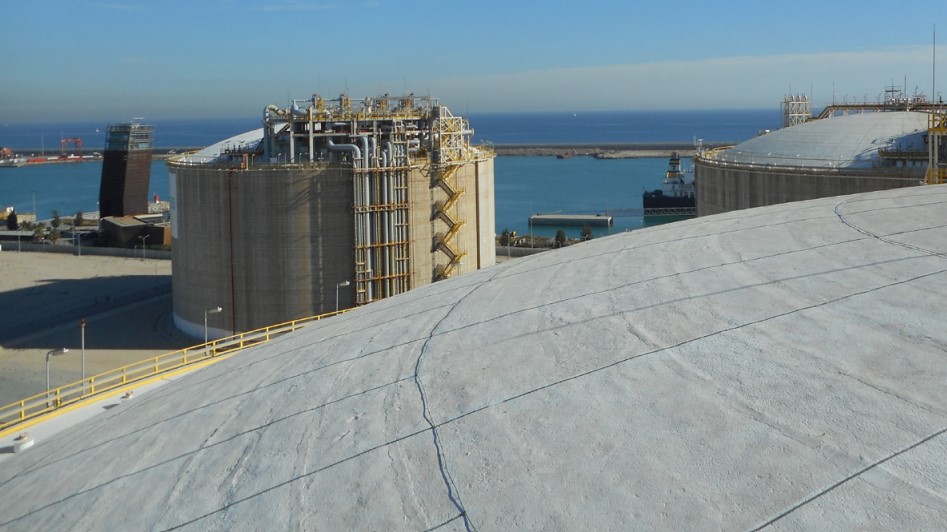This story requires a subscription
This includes a single user license.
LNG imports decreased by 34.3 percent year-on-year to 21.8 TWh in October and accounted for 55.2 percent of the total gas imports.
Previously, Spanish LNG imports decreased by 26 percent year-on-year to 14.2 TWh in September.
Spanish LNG imports decreased by 41 percent year-on-year to 13.2 TWh in August.
Imports dropped by 41 percent year-on-year to 13.2 TWh in August and were lower by 33.1 percent year-on-year to 13.7 TWh in July.
Including pipeline imports from Algeria (10.29 TWh), France, and Portugal, gas imports to Spain reached about 25.9 TWh last month, a drop from 33.8 TWh in October last year, according to the monthly report by Enagas.
Moreover, national gas demand in October decreased by 4.4 percent year-on-year to 23.9 TWh.
Demand for power generation dipped by 27.9 percent year-on-year to 6 TWh last month, while conventional demand increased by 7.2 percent to 17.9 TWh, the LNG terminal operator said.
Storage facilities were 100 percent full in October, compared to 97 percent in the same month last year and 100 percent in the prior month.
Enagas operates a large network of gas pipelines in Spain and has three wholly-owned LNG import plants in Barcelona, Huelva, and Cartagena.
It also owns 75 percent of the Musel LNG facility, 50 percent of the BBG regasification plant in Bilbao, and 72.5 percent of the Sagunto plant, while Reganosa operates the Mugardos plant.
In August last year, Spanish power group Endesa delivered the first commercial cargo to the El Musel LNG terminal in Gijon.
Endesa completed the first reloading operation at the facility in April of this year.
There were no ship unloading or loading operations at the facility during October.
Russia and Algeria biggest LNG suppliers
The seven operational Spanish LNG regasification terminals unloaded 17 cargoes last month, down by eight cargoes compared to October last year.
Russia was the biggest LNG supplier to Spain in October with 4.16 TWh, slightly down from 4.28 TWh last year, and the country was followed by Algeria with 3.45 TWh, down compared to 6 TWh last year.
During October, Spain also received 2 TWh from the US, a big drop compared to 6.99 TWh in October 2023, 1.86 TWh from Nigeria, slightly higher from 1.75 TWh last year, 1 TWh from Angola, 0.86 TWh from Qatar, and 0.84 TWh from Congo.
The US and Russia were the biggest LNG suppliers to Spain in September.
Also, Russia was the biggest LNG supplier to Spain in April, May, June, July, and August, while the US was the biggest supplier in January and February.
LNG reloads dip
Spanish LNG terminals loaded 0.42 TWh in October, down by 84.1 percent year-on-year.
Reloads also dropped compared to 0.67 TWh in September, which rose by 6.3 percent year-on-year.
Reloads rose from 0.35 TWh in August, the lowest monthly figure this year, but were down significantly compared to 2.49 TWh in July, the highest monthly figure this year.
The LNG terminals loaded 1.81 TWh in June, 1.19 TWh in May, 0.45 TWh in April, 0.56 TWh in March, 1.07 TWh in February, and 0.92 TWh in January.
During October, the Barcelona terminal reloaded 0.24 TWh, Mugrados reloaded 0.1 TWh, and the Huelva terminal reloaded 80 GWh.
Enagas said the loaded volumes were 50.8 percent used for bunkering and the rest landed in Europe.
During January-October, 50.2 percent of the loaded volumes were used for cooling down/gassing up of tankers, 30.1 percent of the volumes landed in Europe, and 19.4 percent of the volumes were used for bunkering.
Moreover, truck loading operations at the LNG terminals rose 10 percent in October year-on-year to 1046.
The Huelva LNG terminal completed 218 truck loads in October, while the Barcelona terminal completed 207 truck loads and the Sagunto terminal completed 189 truck loads, the data shows.

